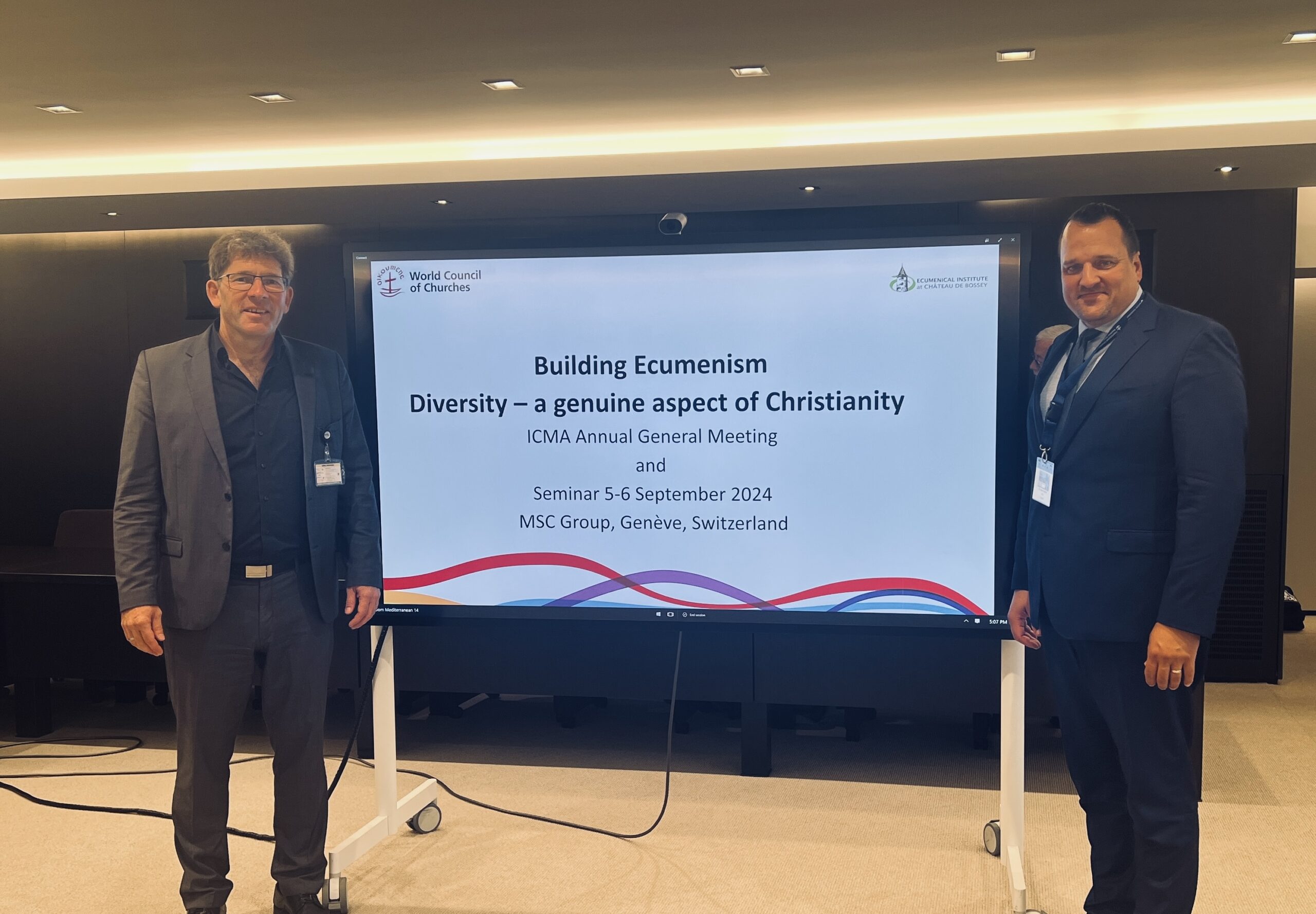Over the last year, NAMMA member Eric Phinney of the Saint John Seafarers’ Mission and his wife Val have been sailing in a sailboat called Tevah (the Hebrew word used for both Noah’s ark and Moses’ basket). The trip gave him a chance to meet chaplains all along the East Coast and think about seafarers’ centers from the perspective of a seafaring visitor. Here are those thoughts, along with a summary of his trip so far:
After finishing up our duties for the parish and clearing out the rectory, Val and I moved aboard our 36 foot sailboat, Tevah. On September 8th we sailed out of Saint John Harbour bound for the Bahamas. For about 8 months we traveled the Atlantic Coast and the Intercoastal Waterway, crossed the Gulf Stream, and explored the Bimini Islands, New Providence Island, and the Exumas. We reached as far south as the Tropic of Cancer on Long Island, and then spent a good amount of time in Elizabeth Harbour and Georgetown in Great Exuma. Our return voyage was similar except for a stop in Nassau and three weeks in Vero Beach. Our boat waits for us now in Easton, Maryland until summer arrives fully in the North Atlantic.
I have now experienced something that your average seafarer knows well: 8 months away from home on a boat. While many parts of what we did are vastly different than what commercial seafarers do, there were some similarities, and I got a small hint of what their experience of coming into port must be like.
Scarcity and planning ahead We could not rely on getting everything we wanted at any particular port of call. If we had fuel we might not have a cell phone signal, if we had great wifi we might not have an accessible grocery store, and if we had a great place to anchor the boat we might not have a place to actually get to shore. We certainly became aware of the need to do research before we arrived in a new place to know what we could actually access. Often there was some kind of time pressure on us as well, and we would need to leave without having gotten everything on our list. We learned quickly to buy three times what we normally would, as it might take us three more stops to find it again.
Talking shop in Tampa While we were anchored in Vero Beach, Jason Zuidema of NAMMA noticed I was only three hours away from a seafarers’ welfare conference in Tampa and kindly invited me to join them. We were delighted to see so many familiar folks. During this meeting I was also able to connect with the Bishop of the Bahamas and follow up on a previous meeting we had had. I had seen no sign of seafarers’ welfare work while in Nassau, and he said that he sadly did not know of any either.
Finding seafarers’ centers I was pleased to have a tour of the port and seafarers’ centre at Port Everglades while sailing through. From the fine little basin surrounded by condos at which we were anchored we were able to locate the center and get there by uber. This was not an easy feat, however, as the listing was not correct, and the uber driver had difficulty finding the right driveway when we did get there. I can only imagine what seafarers go through in each different port to find our centers. Once, when in Vancouver, I was greatly impressed by little flying angels signs with arrows pointing the way. These bread crumbs were very welcome! I will put signage like that, as well as easy-to-follow digital directions, on my list of things to do when I get back.
Different challenges, new solutions We sailed through or stayed in Portland, New York, Norfolk, Georgetown, Charleston, Wilmington, Port Everglades, Miami, and Nassau. Every port has unique challenges from the points of view of both seafarers and seafarers’ welfare organizations.
The major ports along the way showed me the complexities of reaching seafarers in large commercial places. Talking with the lone chaplain in Tampa Bay confirmed my suspicions that larger ports are underserved just because of how spread out they are – not even two chaplains would ever be able to cover all the ground adequate. Seafarers need better than this, but we are often already stretched quite thin. I believe that in this technologically-advanced age there are many solutions still untapped. Ship visiting will always be required, but there is much more that we are able to do today if we correctly utilize technology. This will involve risk, but just doing the same thing we have been doing will leave us less and less adequate to the task. What is needed is creativity and imagination that springs from experience and knowledge.
More stories from Rev. Phinney’s travels can be found on his and Val’s travel blog.





